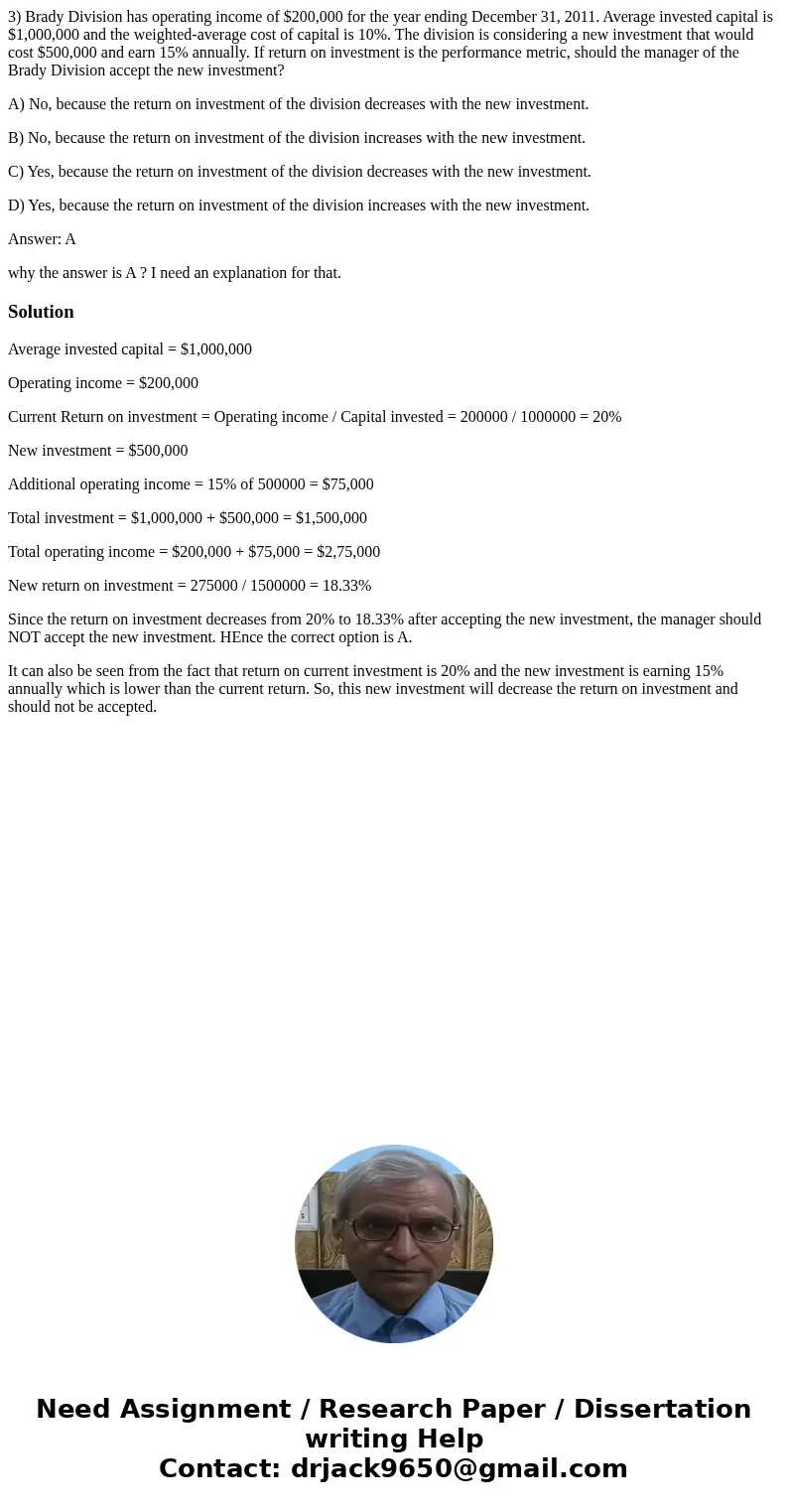3 Brady Division has operating income of 200000 for the year
3) Brady Division has operating income of $200,000 for the year ending December 31, 2011. Average invested capital is $1,000,000 and the weighted-average cost of capital is 10%. The division is considering a new investment that would cost $500,000 and earn 15% annually. If return on investment is the performance metric, should the manager of the Brady Division accept the new investment?
A) No, because the return on investment of the division decreases with the new investment.
B) No, because the return on investment of the division increases with the new investment.
C) Yes, because the return on investment of the division decreases with the new investment.
D) Yes, because the return on investment of the division increases with the new investment.
Answer: A
why the answer is A ? I need an explanation for that.
Solution
Average invested capital = $1,000,000
Operating income = $200,000
Current Return on investment = Operating income / Capital invested = 200000 / 1000000 = 20%
New investment = $500,000
Additional operating income = 15% of 500000 = $75,000
Total investment = $1,000,000 + $500,000 = $1,500,000
Total operating income = $200,000 + $75,000 = $2,75,000
New return on investment = 275000 / 1500000 = 18.33%
Since the return on investment decreases from 20% to 18.33% after accepting the new investment, the manager should NOT accept the new investment. HEnce the correct option is A.
It can also be seen from the fact that return on current investment is 20% and the new investment is earning 15% annually which is lower than the current return. So, this new investment will decrease the return on investment and should not be accepted.

 Homework Sourse
Homework Sourse